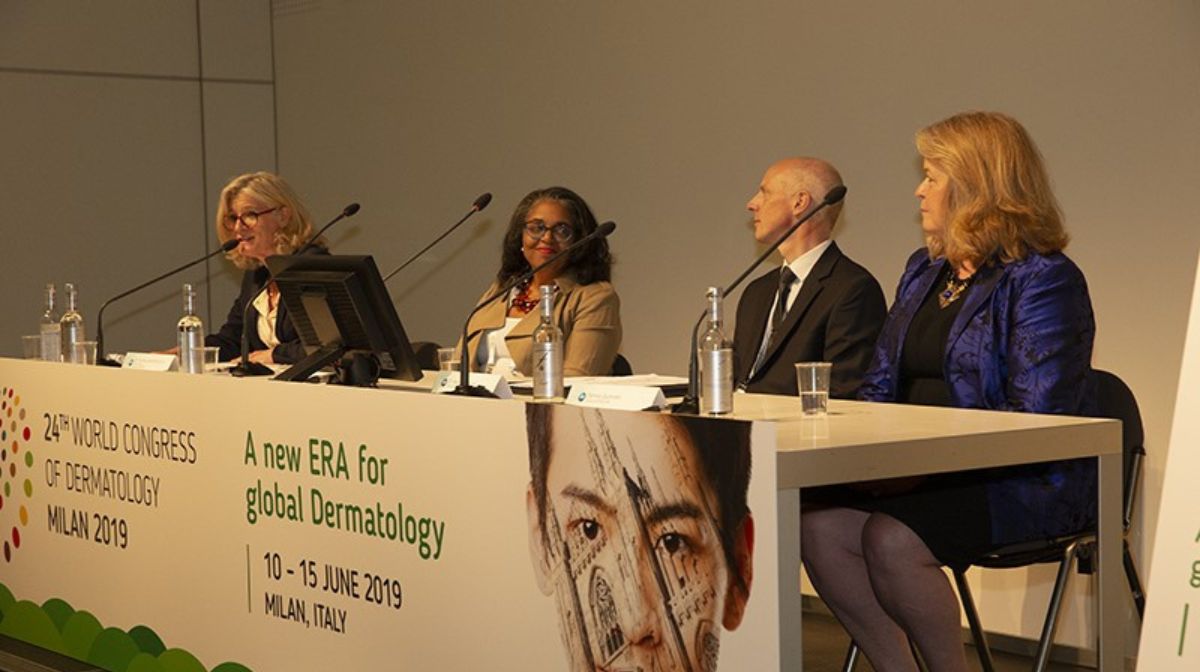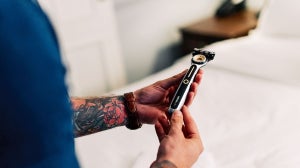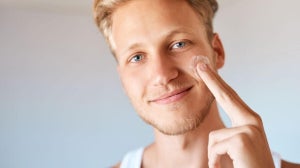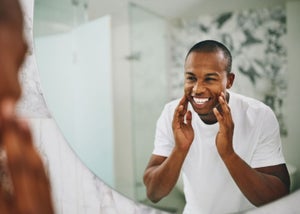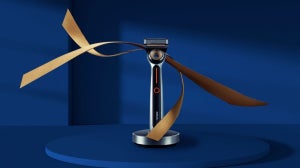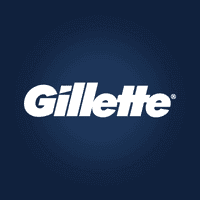
At this year's World Dermatology Congress in Milan, we spoke with Kristina Vanoosthuyze, Senior Manager, Gillette Scientific Communications, about Gillette's participation at the event.
This year’s congress stands under the theme “a new ERA for global Dermatology”. What does this mean to Gillette?
Gillette vows that all men around the world deserve to look and feel their best with a razor that is right for their skin, even those who suffer from sensitive skin, razor bumps and other symptoms of shaving irritation. At this year`s congress, the spotlight is on SkinGuard Sensitive, Gillette's first razor specifically designed to stop shaving irritation. We are sharing new research that demonstrates how SkinGuard Sensitive can be transformative for men who have shave related skin problems and may previously have struggled to find a razor that felt comfortable enough for their skin.
How does Gillette contribute to revolutionize global Dermatology and improve patient care?
Gillette develops new razor innovations and shaving solutions based on a deep understanding of men, their shaving needs, their facial hair and skin. By sharing our knowledge of the Science of Shaving with dermatologists from around the world and presenting our clinical research at prestigious scientific conferences like WCD, we hope to equip dermatologists with information that will help them give great shaving advice and product recommendations to their male patients.
Is this Gillette's first participation at a World Congress of Dermatology?
No, not at all. This is Gillette's 3rd participation at the World Congress of Dermatology. After Seoul (in 2011) and Vancouver (in 2015), we are very proud to be back again on this distinguished international dermatology forum to share our new research and skin science and show our latest razor innovations.
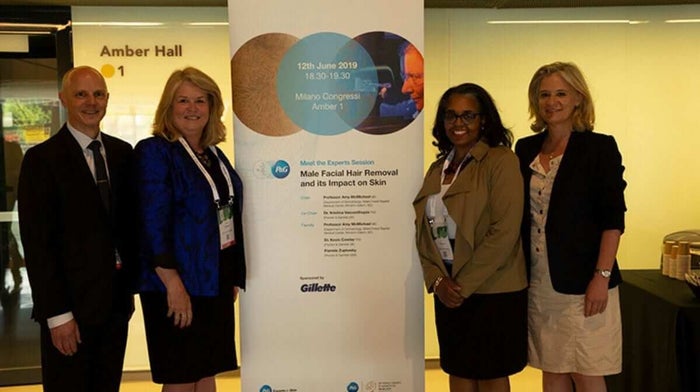
Are you otherwise collaborating with Dermatologists in your research?
Yes, absolutely. We collaborate with global dermatologist thought‐leaders on the design and execution of our clinical studies and our clinical research is done at academic dermatology departments under guidance and supervision of reputable skin experts. Our clinical data are not only based on panellist self‐assessments but also on visual examinations and grading of the skin by dermatologists.
What are you expecting from this year’s congress and exchange with professionals and experts?
We expect a lot of interest for our new scientific findings, because they are addressing and providing solutions for the most common shave related skin problems that dermatologists are faced with in their practice (such as Pseudofolliculitis barbae or razor bumps).
Gillette is doing research since more than 115 years to enhance their consumers’ everyday life and routines. How has Gillette innovated to provide a better shaving experience for men with sensitive skin?
Throughout its history, Gillette has been on a continuous journey to improve the comfort of the shave by minimizing the impact of the blades on the skin during the shave. This ranges from improving the quality and sharpness of our blades (to minimize the cutting force), to adding and optimizing lubrication technology on board our razors (to minimize friction between the blades and skin) to optimizing where the handle connects to the cartridge to prevent excessive force on the blades. A lot of those insights were shared at the 2015 WCD in Vancouver and were published in a scientific paper (1). This year, we have however completely reinvented the design of our cartridge and taken the comfort of the shave to another level with Gillette SkinGuard Sensitive, our first razor specifically designed for men with sensitive skin.
The latest clinical study about the impact of shaving with SkinGuard Sensitive showed that the incidence of razor bumps was reduced by over 60%. What is the innovation behind this?
We are indeed sharing brand new research that shows how daily shaving with SkinGuard Sensitive can help men who suffer from razor bumps (also called Pseudofolliculitis barbae (or PFB). In a new clinical study (carried out at the department of Professor Amy McMichael MD at Wake Forest University in North Carolina), the incidence of razor bumps was reduced by more than 60 percent after 12‐weeks daily shaving (2) with Gillette SkinGuard Sensitive. Moreover, the study did not only show a significant improvement in the skin`s appearance but the panellists also reported significant emotional and social benefits, such as feeling more attractive, more confident and more comfortable getting closer to others.
What did Gillette uncover about male adolescents in its recent research?
Gillette is also sharing new research amongst male adolescents from around the world at WCD. The results demonstrate that adolescence can be accompanied with feelings of confusion and embarrassment, that the majority of adolescents tried shaving at or before the age of 16 years old, that there is a big need for more information on how to shave, especially as many experience skin irritation and nicks when they first try to shave.
How can Gillette help male adolescents?
Gillette can help by providing information about how to shave and care for their skin. We need to communicate this early as some males start puberty as young as 9 years old and most individuals in our research first tried shaving at or before the age of 16 years. This coincides with the age where many adolescents are having difficulty shaving due to the presence of spots or acne.
What does Gillette recommend to adolescents who want to learn how to shave with a razor?
We are recommending these 5 simple steps:
1. Wash the face with a gentle cleanser to soften beard hairs and make them easier to cut 2. Apply plenty of shave foam or gel 3. Shave using light gently strokes with a razor designed for sensitive skin 4. Rinse the face to ensure all shave gel or foam is removed 5. Apply an after‐shave cream or balm to replenish moisture and soothe the skin
Moreover, our research found that adolescents with acne overwhelmingly preferred Gillette SkinGuard Sensitive versus their normal razor. So, this razor can also offer a new and unique shaving solution for the delicate skin of adolescents to minimize shave irritation, especially when spots, pimples and acne are present.
1. The Biomechanics of Blade Shaving, K. Cowley and K. Vanoosthuyze, International Journal of Cosmetic Science, 38 (suppl.1), 17‐23, 2016 2. Daily is defined as 5+times per week

